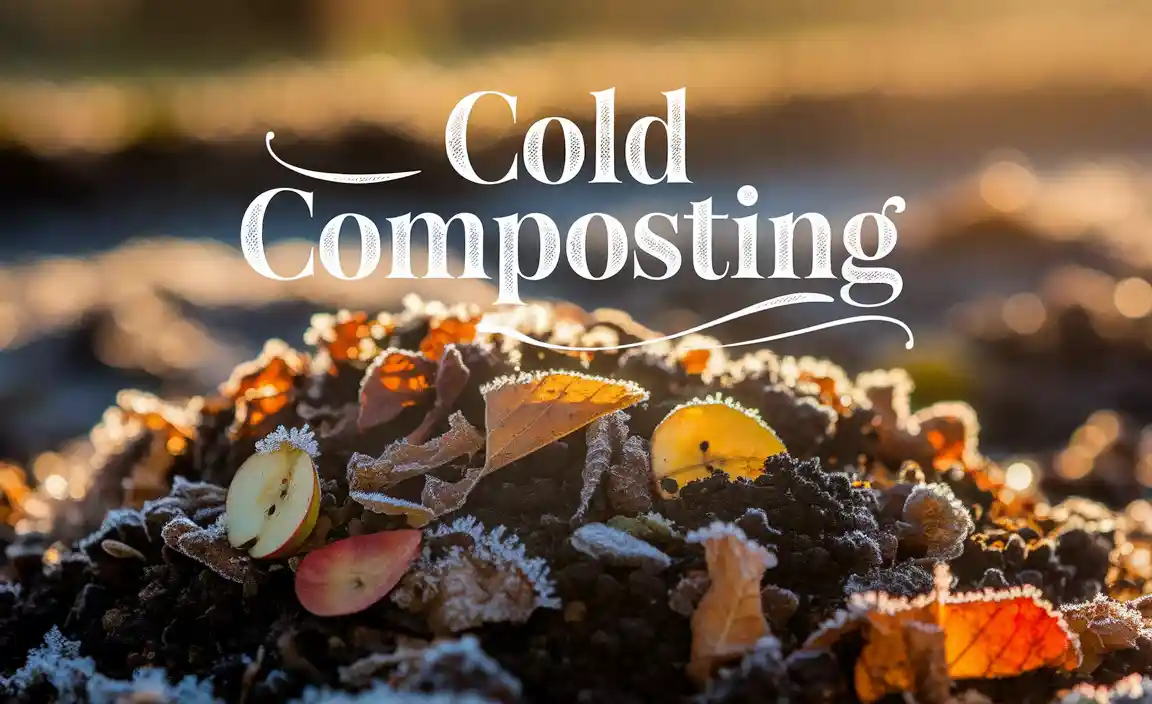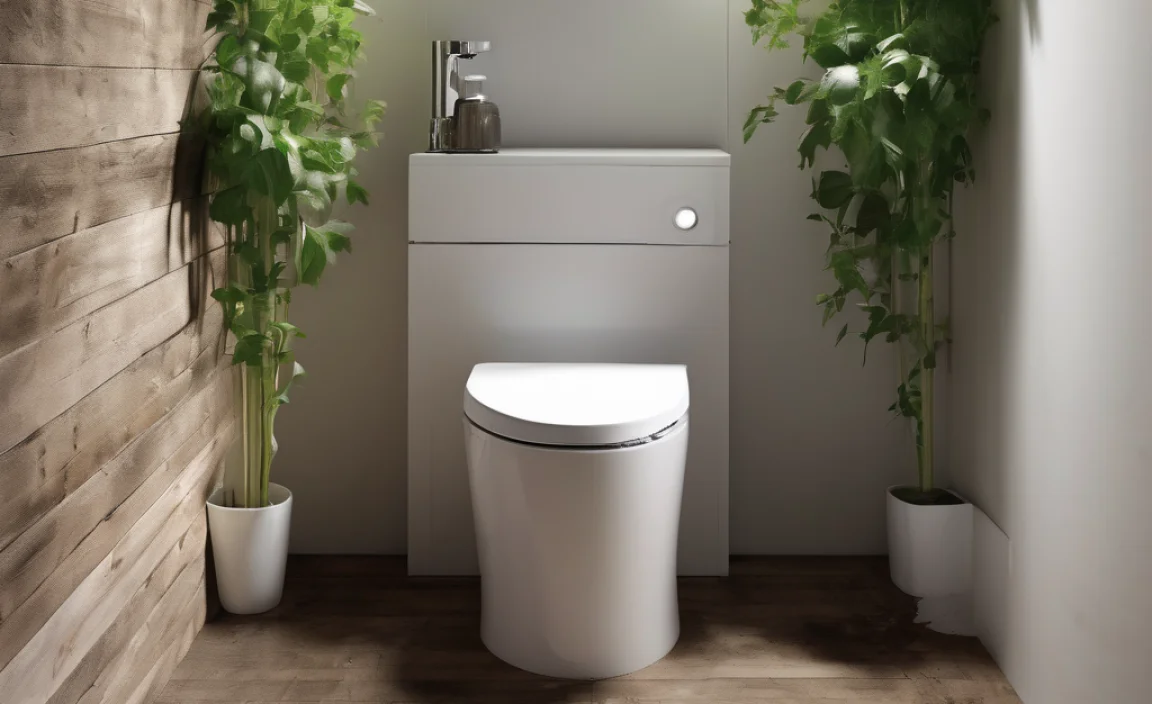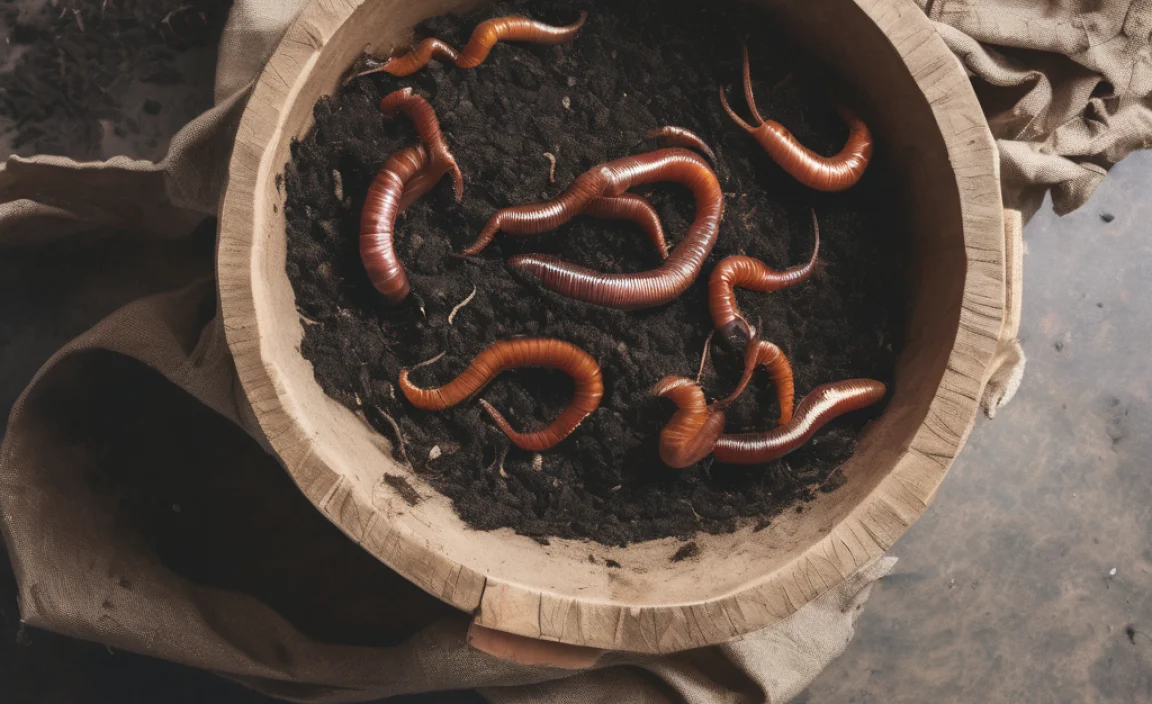Ever wanted to give your garden a boost with super-rich soil but felt overwhelmed by the idea of composting? You’re not alone! Many folks think composting is complicated, but it’s actually pretty simple once you know how. This guide is here to break it all down for you. We’ll walk through building your very own compost bin, step by easy step. Get ready to turn kitchen scraps and yard waste into garden gold!
Your Compost Bin Journey Starts Here: A Simple Setup
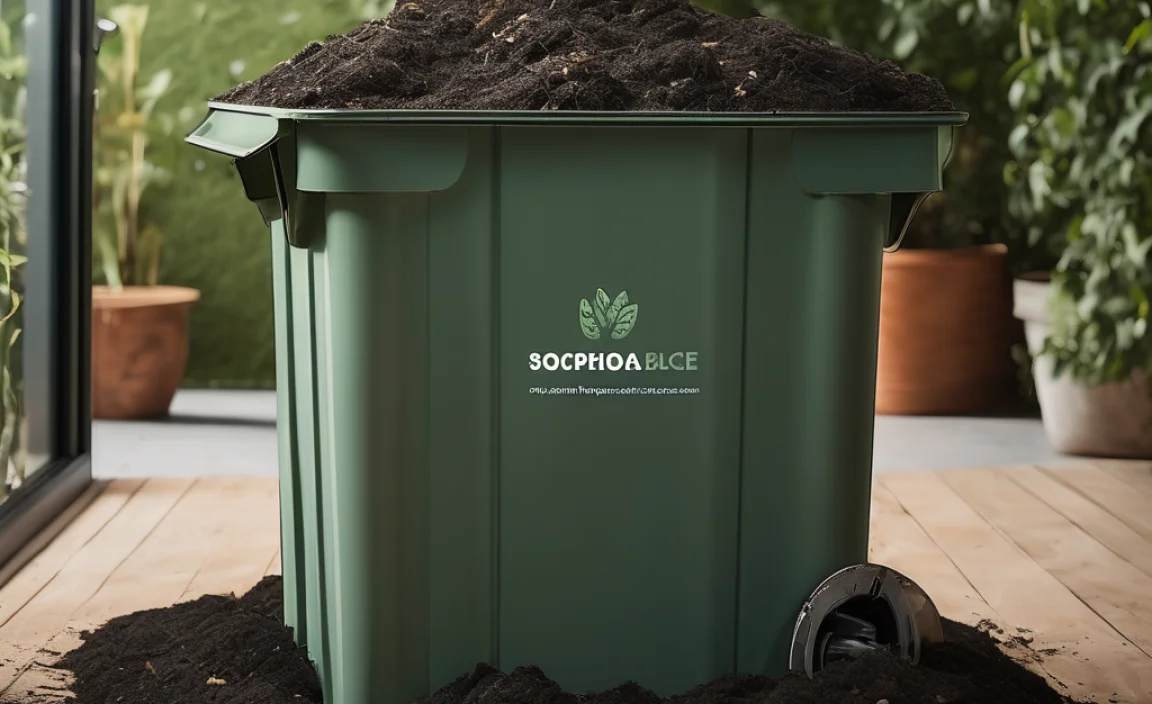
Welcome to the wonderful world of composting! My name is Troy D Harn, and I’m here to show you how to set up a fantastic compost bin without any fuss. Think of me as your friendly neighbor who’s figured out the best way to do this, and now I’m sharing it with you. We’re going to keep things super practical, using everyday language and straight-up advice. No need for fancy tools or a degree in soil science. We’ll cover everything you need to get started, from choosing the right spot to adding your first materials. By the end, you’ll have a working compost bin and the confidence to use it!
Why Build Your Own Compost Bin? The Big Benefits
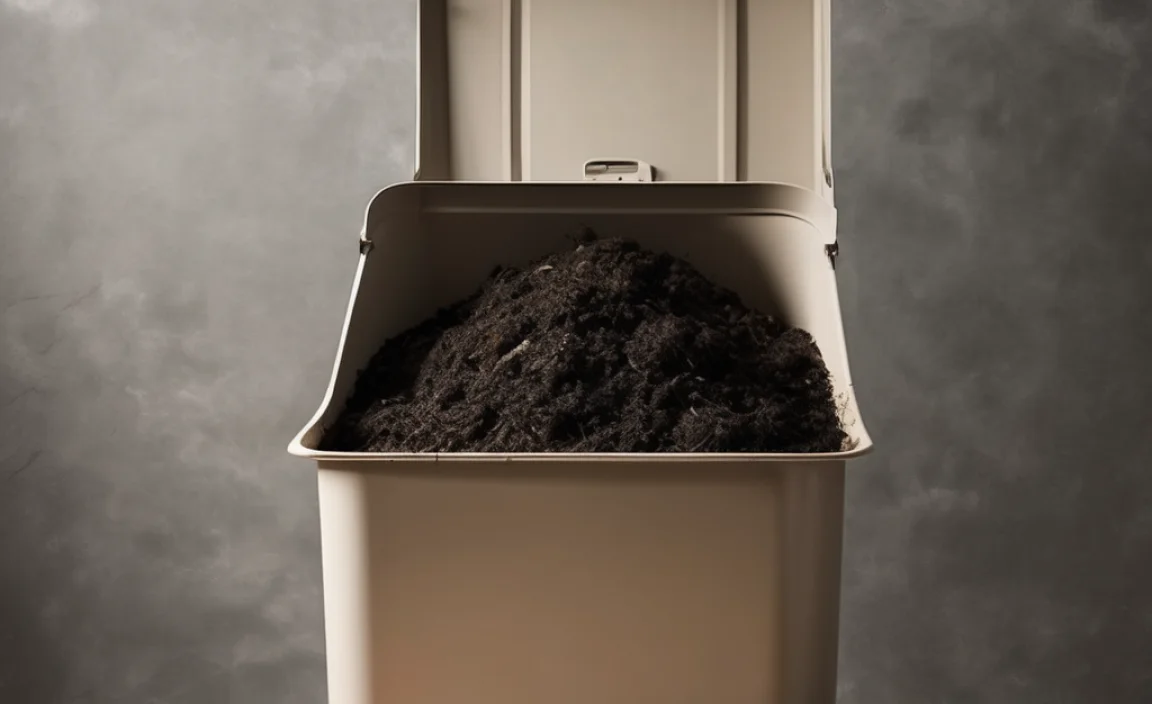
Before we get our hands dirty, let’s talk about why building your own compost bin is such a great idea. It’s more than just a weekend project; it’s a smart move for your wallet and your garden.
- Save Money: Buying bags of compost or soil amendments can add up. Making your own is practically free!
- Boost Your Garden: Compost is like a superfood for your plants. It improves soil structure, helps retain moisture, and provides essential nutrients, leading to healthier, happier plants and bigger harvests.
- Reduce Waste: A huge chunk of what we throw away can actually be composted. This means less trash going to landfills, which is great for the environment.
- Control What Goes In: When you make your own, you know exactly what’s in your compost. No mystery ingredients!
- Satisfying DIY Project: There’s a real sense of accomplishment in building something useful with your own hands that also benefits your home and garden.
Choosing Your Perfect Compost Bin Style: What Works for You?

Not all compost bins are created equal, and the best one for you depends on your space, how much waste you produce, and how much effort you want to put in. Here are a few popular styles:
1. The Simple Pile (The “No Bin” Bin)
The easiest way? Just create a designated pile in a corner of your yard. This is great if you have plenty of space and aren’t worried about aesthetics. It’s the most budget-friendly and requires no building!
- Pros: Free, easy to start, can handle large volumes.
- Cons: Can look messy, may attract pests more easily if not managed, can dry out or get too wet, slower decomposition.
2. The Wire Mesh Bin
This is a super simple DIY option that’s a step up from a plain pile. You’ll need a roll of hardware cloth or chicken wire and some stakes or zip ties to hold it together.
- Pros: Excellent aeration, easy to build, affordable, good for smaller yards.
- Cons: Can dry out quickly, less contained than other options, might not look as tidy.
3. The Wooden Pallet Bin
If you can get your hands on a few free wooden pallets, this is a fantastic and sturdy option. You can arrange them to form a square or a three-sided bin.
- Pros: Sturdy, often made from recycled materials, good size, decent aeration.
- Cons: Requires some basic tools (saw, screws/nails, drill), pallets can be heavy, may require lining to prevent material loss.
4. The Tumbler Bin (Store-Bought or DIY)
Tumblers are enclosed bins that you can rotate or “tumble.” This mixes the compost for you, speeding up the decomposition process and keeping pests out. You can buy these, or if you’re feeling ambitious, build one yourself.
- Pros: Fast decomposition, easy to mix, pest-resistant, tidy appearance.
- Cons: Can be expensive to buy, DIY versions can be complex, smaller capacity compared to open bins.
For this guide, we’ll focus on building a simple yet effective wooden bin using readily available materials, as it’s a great balance of durability, containment, and ease of construction for beginners.
What You’ll Need: Gathering Your Composting Supplies

Alright, let’s get our toolkit ready! Building a basic wooden compost bin is straightforward. You don’t need a professional workshop, just a few common tools and materials. Safety first – always wear gloves and eye protection when working with tools.
Materials:
- Wooden Boards: You can use new lumber or, even better, reclaimed wood like old fence pickets or untreated pallet wood. Aim for boards that are about 1 inch thick and 4-6 inches wide. You’ll need enough to create three or four sides for your bin. For a good starter size bin (about 3x3x3 feet), you’ll need roughly 12-16 boards 3 feet long for the sides, and about 8-12 boards 3 feet long for supports if you want more structure. For this guide, let’s assume we’re building a 3-foot cube.
- Corner Posts: Four sturdy posts, about 3-4 feet long and at least 2×2 inches in thickness. These will form the main structure. Untreated lumber is best to avoid chemicals leaching into your compost.
- Screws or Nails: Outdoor-rated screws (like deck screws) or galvanized nails are best to prevent rust. About 2-3 inches in length should work well.
- Optional: Hardware Cloth/Wire Mesh: If you want extra protection against pests or you’re using wood with gaps, you can line the inside with wire mesh.
Tools:
- Measuring Tape: To get your board lengths just right.
- Saw: A handsaw, circular saw, or miter saw to cut your boards to size.
- Drill with Drill Bits: For pre-drilling holes if you’re using screws (prevents wood splitting) and for driving screws.
- Hammer: If you choose to use nails.
- Screwdriver: If using screws.
- Work Gloves: To protect your hands.
- Safety Glasses: Essential for protecting your eyes when cutting or hammering.
- Level (Optional but Recommended): To ensure your posts are straight up and down.
- Shovel or Post Hole Digger: If you plan to sink your posts into the ground for extra stability.
Step-by-Step: Building Your Simple Wooden Compost Bin
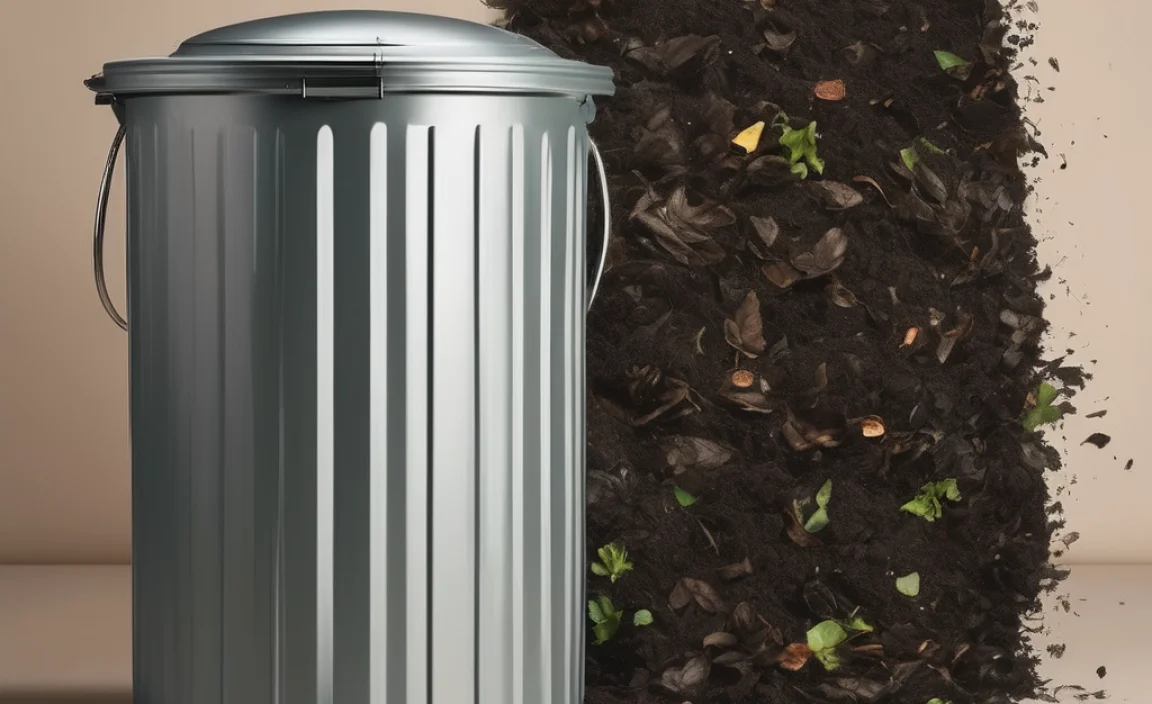
Let’s get building! We’re aiming for a simple, sturdy bin, about 3 feet wide, 3 feet deep, and 3 feet tall. This size is manageable and allows for good airflow.
Step 1: Decide on Your Location
Finding the right spot is key. You want a place that is:
- Convenient: Easy to access from your kitchen and garden.
- Well-Drained: Avoid areas that get waterlogged.
- Partially Shaded: Full sun can dry out your compost too quickly, while deep shade might keep it too damp. A spot that gets morning sun and afternoon shade is often ideal.
- Away from Structures: Give it some breathing room from your house, shed, or fences to allow for airflow and to avoid moisture buildup.
- Accessible for Turning: Make sure you have enough space around it to comfortably add materials and eventually turn the compost.
Step 2: Prepare Your Corner Posts
You have two main options here:
Option A: Posts Above Ground: Cut your four corner posts to be 3 feet long. These will be attached to the outside of your bin walls. This is the easiest method if you don’t want to dig holes.
Option B: Posts in the Ground: Cut your four corner posts to be about 4 feet long. Dig holes about 1 foot deep for each post. This offers maximum stability. Use your level to ensure they are perfectly vertical before backfilling and tamping the soil firmly.
Step 3: Cut Your Side Boards
Measure and cut your wooden boards into 3-foot lengths. You’ll need enough boards to create the sides. For a 3-foot cube, you’ll need four sides, each about 3 feet tall. If your boards are 6 inches wide, you’ll need about 6 boards per side (6 boards x 6 inches = 36 inches, or 3 feet). So, for four sides, that’s 24 boards, each 3 feet long. If you’re using 4-inch wide boards, you’ll need 9 per side, totaling 36 boards.
Tip: It’s better to cut a few extra boards just in case.
Step 4: Assemble the First Side
Take two of your corner posts and lay them flat on the ground, parallel to each other, about 3 feet apart (or the width of your bin minus the thickness of the two posts). Now, take your 3-foot long side boards and start attaching them horizontally to the inside of the posts. Start with the bottom board, leaving a small gap (about 1/2 inch) between the board and the ground if your posts are above ground. Then, attach the next board, leaving a gap of about 1-2 inches between boards. This spacing is crucial for airflow!
Use your drill to pre-drill holes in the boards where you plan to insert screws, then drive the screws into the posts. Alternatively, use your hammer and nails. Aim for two screws or nails per board end into each post.
Continue attaching boards up the length of the posts, maintaining the 1-2 inch gaps. You’ll want to build up to a height of about 3 feet.
Step 5: Assemble the Second Side
Repeat Step 4 with another pair of corner posts and another set of side boards to create the second side panel of your bin. You should now essentially have two long “walls” lying on the ground.
Step 6: Connect the Sides to Form Three Walls
Now, you’ll connect these two sides to form a U-shape.
If your posts are above ground (Option A): Stand up one of the assembled sides. Now, take your third set of corner posts. Slide them onto the ends of the boards of the first side, and then attach the second side (the U-shape) to these new corner posts. This will create your three-sided bin. Make sure the posts are plumb (vertical) using your level!
If your posts are in the ground (Option B): Stand up your two assembled sides and position them. Now, attach boards horizontally to the inside of the already-set corner posts to create the back wall connecting your two sides. Remember the gaps for airflow.
Let’s aim for a three-sided bin for this guide. This allows easy access for adding materials and turning. The open front makes it super convenient. You can add a fourth-side later if you wish, perhaps with a hinged door, but for a beginner, three sides are perfect.
Step 7: Add the Fourth Side (Optional but Suggested)
If you opted for a fourth side (to make a full box) or want to improve access, you can attach boards loosely to the remaining two posts. For easier access to turn your compost, consider making this side removable or using a simple gate system. A good way to do this for a beginner is to simply attach 2-3 boards to the last set of posts, leaving the bottom one easier to remove if needed, or creating a simple criss-cross of boards that can be lifted away.
Step 8: Reinforce and Secure
Go around your bin and ensure all boards are securely fastened. Wiggle the structure to check for any wobbles. If it feels loose, add more screws or nails. If you used above-ground posts, you might want to add a few extra boards at the bottom for stability, or even drive short stakes around the base.
Step 9: Add Pest Protection (Optional)
If pests are a concern in your area, or if your wood has large gaps, you can staple hardware cloth or chicken wire to the inside walls of your bin. This creates a barrier while still allowing air to flow.
And there you have it! A sturdy, functional compost bin ready for action.
What Goes into Your New Compost Bin? The Greens and Browns Explained
Now that your bin is built, it’s time for the exciting part: filling it up! Composting is all about balancing “Greens” (nitrogen-rich materials) and “Browns” (carbon-rich materials). Think of it like a recipe for decomposition.
Greens (Nitrogen-Rich):
These are typically wet, fresh materials that provide nitrogen to help the microorganisms that break down the compost multiply.
- Fruit and vegetable scraps (peels, cores, rinds)
- Coffee grounds and tea bags
- Grass clippings (in thin layers to avoid matting)
- Plant trimmings from the garden (non-diseased)
- Manure from herbivores (cows, horses, rabbits, chickens)
- Seaweed
Browns (Carbon-Rich):
These are usually dry, woody materials that provide carbon and create air pockets, preventing the pile from becoming a soggy, smelly mess.
- Dry leaves
- Straw or hay
- Shredded newspaper (black and white ink only)
- Cardboard (torn into small pieces)
- Twigs and small branches (chopped or shredded)
- Sawdust (from untreated wood)
- Paper towels and napkins (unsoiled by chemicals or grease)
- Eggshells (though they break down slowly)
What NOT to Compost:
To keep your compost healthy and safe, avoid adding:
- Meat, bones, and dairy products (can attract pests and cause odors)
- Oily or greasy foods
- Diseased plants (can spread diseases)
- Weeds that have gone to seed (they might sprout in your garden)
- Pet waste (from dogs or cats – can contain harmful pathogens)
- Chemically treated wood or yard waste
- Glossy or coated paper/cardboard
The Art of Layering: Building Your Compost Pile
The key to good composting is a good mix of greens and browns. A general rule of thumb is to aim for a ratio of about 2 parts Browns to 1 part Greens by volume.
- Start with a Base Layer of Browns: Lay down a 4-6 inch layer of twigs, straw, or shredded cardboard at the bottom of your bin. This helps with drainage and aeration from the start.
- Add Your Greens: Next, add a layer of your kitchen scraps and garden waste.
- Cover with Browns: Always cover your green layer with a layer of brown materials. This is super important for preventing odors and keeping pests away.
- Continue Layering: Keep alternating layers of greens and browns as you add materials. Chop or shred larger items to help them break down faster.
- Add Water (If Needed): Your compost pile should be as damp as a wrung-out sponge. If it’s too dry, add water as you layer. If it seems too wet, add more browns.
Maintaining Your Compost Bin: Keeping the Magic Happening
Your compost bin is now ready to work its magic! Here’s how to keep the decomposition process humming along:
1. Moisture Management is Key
Check the moisture level regularly. If it’s dry, add some water. If it’s soggy, add more brown materials and turn it. A good compost pile doesn’t smell bad; it smells earthy. A rotten egg or ammonia smell usually means it’s too wet or has too many greens.
2. Aeration: Give It Some Air!
Microorganisms need oxygen to do their work. Turning your compost pile with a pitchfork or compost aerator every 1-2 weeks speeds up the process and prevents anaerobic (oxygen-deprived) conditions that lead to foul odors.
Turning Tip: Try to move material from the outside to the inside and vice-versa. If you have a three-sided bin, this is much easier!
3. The Temperature Game
A hot compost pile (130-160°F / 55-70°C) breaks down materials much faster and kills weed seeds and pathogens
.lwrp.link-whisper-related-posts{
margin-top: 40px;
margin-bottom: 30px;
}
.lwrp .lwrp-title{
}.lwrp .lwrp-description{
}
.lwrp .lwrp-list-container{
}
.lwrp .lwrp-list-multi-container{
display: flex;
}
.lwrp .lwrp-list-double{
width: 48%;
}
.lwrp .lwrp-list-triple{
width: 32%;
}
.lwrp .lwrp-list-row-container{
display: flex;
justify-content: space-between;
}
.lwrp .lwrp-list-row-container .lwrp-list-item{
width: calc(25% – 20px);
}
.lwrp .lwrp-list-item:not(.lwrp-no-posts-message-item){
max-width: 150px;
}
.lwrp .lwrp-list-item img{
max-width: 100%;
height: auto;
object-fit: cover;
aspect-ratio: 1 / 1;
}
.lwrp .lwrp-list-item.lwrp-empty-list-item{
background: initial !important;
}
.lwrp .lwrp-list-item .lwrp-list-link .lwrp-list-link-title-text,
.lwrp .lwrp-list-item .lwrp-list-no-posts-message{
}@media screen and (max-width: 480px) {
.lwrp.link-whisper-related-posts{
}
.lwrp .lwrp-title{
}.lwrp .lwrp-description{
}
.lwrp .lwrp-list-multi-container{
flex-direction: column;
}
.lwrp .lwrp-list-multi-container ul.lwrp-list{
margin-top: 0px;
margin-bottom: 0px;
padding-top: 0px;
padding-bottom: 0px;
}
.lwrp .lwrp-list-double,
.lwrp .lwrp-list-triple{
width: 100%;
}
.lwrp .lwrp-list-row-container{
justify-content: initial;
flex-direction: column;
}
.lwrp .lwrp-list-row-container .lwrp-list-item{
width: 100%;
}
.lwrp .lwrp-list-item:not(.lwrp-no-posts-message-item){
max-width: initial;
}
.lwrp .lwrp-list-item .lwrp-list-link .lwrp-list-link-title-text,
.lwrp .lwrp-list-item .lwrp-list-no-posts-message{
};
}

I am passionate about home engineering. I specialize in designing, installing, and maintaining heating, ventilation, and air conditioning systems. My goal is to help people stay comfortable in their homes all year long.

